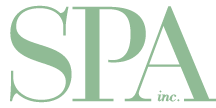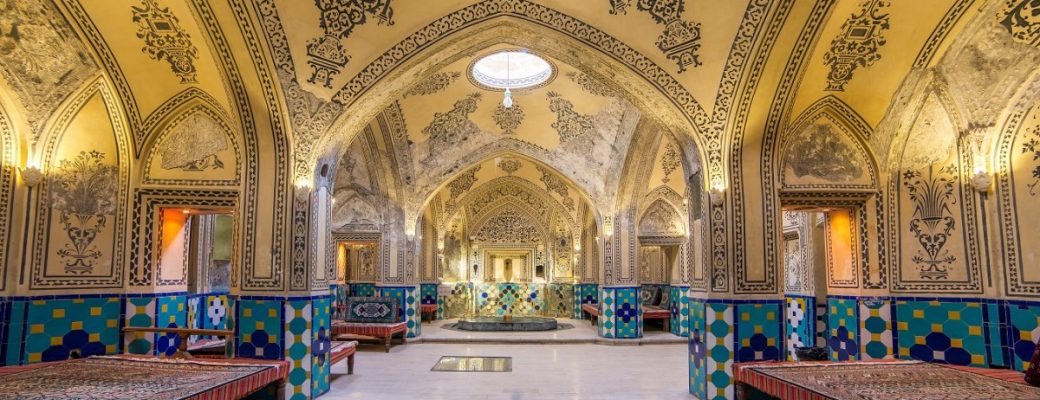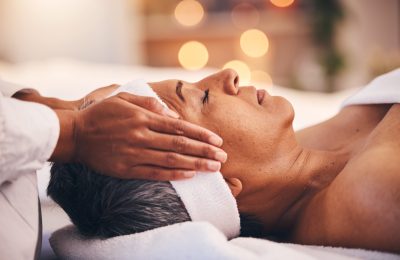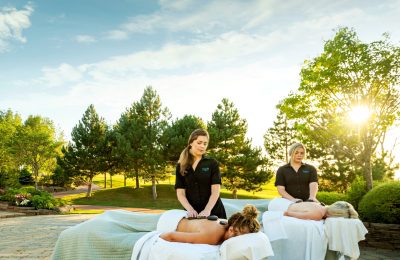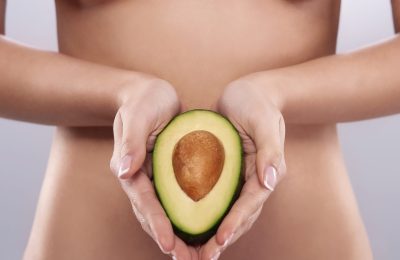The top trends, treatments, and innovations to watch for in 2024 By Sean Tarry EHL—the world’s largest hospitality university—recently released…
Ancient rituals and remedies
It’s a story as old as time: Humans have been covering their skin, steeping, scrubbing and massaging their bodies in the name of wellness and beauty for thousands of years. From ancient India, Egypt and China to Europe, the Americas and Indonesia, the world’s oldest cultures believed in holistic healing of body, mind and soul. The earliest sacred writings pointed to cleanliness and self-care as the wellspring for today’s modern spas. Now, ancient remedies have re-emerged to enhance the modern spa experience.
Ayurveda
Some 5,000 years ago, Sanskrit scriptures promoted the importance of balancing the body, mind and soul. Ayurvedic medicine was among this pantheon of wisdom, touting diet, exercise and meditation as a path for living a long, healthy life. Still in practice today, it prescribes methods for recalibrating the body’s chakras, including sadhana – spiritual practice – and the use of herbs and oils for health: sesame oil massage to rejuvenate the body; bhringaraj (eclipta prostrata, or “false daisy”) for radiant skin and thick hair; muscle and joint soothing with ashwagandha (also known as Indian ginseng or winter cherry), bala (country mallow) and mahanaraya oil (infused with almost 40 herbs); and neem (Indian lilac) to cool, cleanse and detoxify. You can learn more about Ayurveda in this issue’s “Science of the Spa” (p. 19).
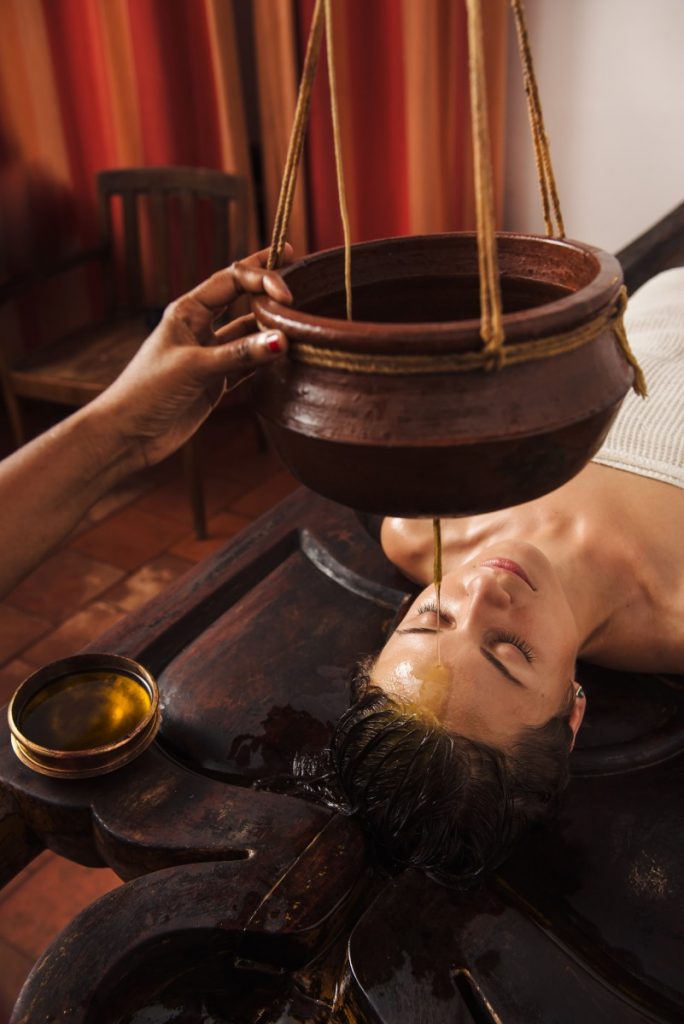
Bathing rituals
Among all ancient civilizations, water held sacred qualities as an important spiritual path to cleanse the body, mind and spirit. For thousands of years water, mud and the minerals therein, like sodium, magnesium and potassium, offered relief from skin irritations, muscle aches and pains, and helped boost circulation and refreshment. From the earliest humans diving into hot mineral springs, Egyptian milk and honey soaks, Roman mud baths, hammam in Morocco and the sea salt baths of the Middle East, to herb-infused sento soaks in Japan, Scandinavian plunge pools and European mineral springs, “taking the waters” – whether hot or cold – is recognized universally as a way to detoxify, heal and improve overall health.
Berries, bushes & bark
Reaching into nature for remedies, the people of Myanmar produce Thanaka powder by grinding the bark of the Thanaka tree and mixing it with water for a poultice that protects skin from the harmful effects of the sun, while having antibacterial, cleansing and anti-acne properties; the tree roots are also used for Indigenous medicines. In North America, cedar was used as a natural antibiotic and still today is popular in cedar-infused massage oils, healing baths and body wraps. In Mesoamerica, the nutrient-rich bark of the mimosa tenuiflora tree was ground to create Tepezcohuite, acclaimed as a skin regenerative; Salma Hayek’s skincare line, Nuance, touts this as its primary ingredient. Ancient Peruvians prized the fat from the cocoa bean (now commonly used) as a moisturizer and antioxidant. In South Africa, the fynbos shrub is a traditional health remedy that’s also used as an ingredient in restorative skincare today. And, the now-trendy goji berries have played a role in ancient Chinese medicine for thousands of years – the seed’s oil being prized for its antioxidant qualities.
Essential oils & aromatherapy
For 6,000 years, incense and plant-based essential oils have helped to improve well-being and, according to some traditions, offered a spiritual link to the gods. Prized for their aromatic, beauty-enhancing, healing and antiseptic qualities, essential oils also were credited for saving lives during the Bubonic Plague in the 14th century. In Tahiti, coconut oil infused with tiare flower (Tahitian gardenia) – known as monoï, or “sacred,” oil – is a centuries-old hair and skin elixir that can now be found in products by Nars, Yves Rocher, Eminence Organics and many other brands. Today, traditional Mayan achiote oil is applied to hydrate the skin (and is commonly used in cooking); Moroccan argan oil, which was traded over 1,000 years ago throughout the Mediterranean, is prized for its rich nutrients; and natural oils, like clove, are still used in European hospitals for their antimicrobial, antifungal and antioxidant properties.
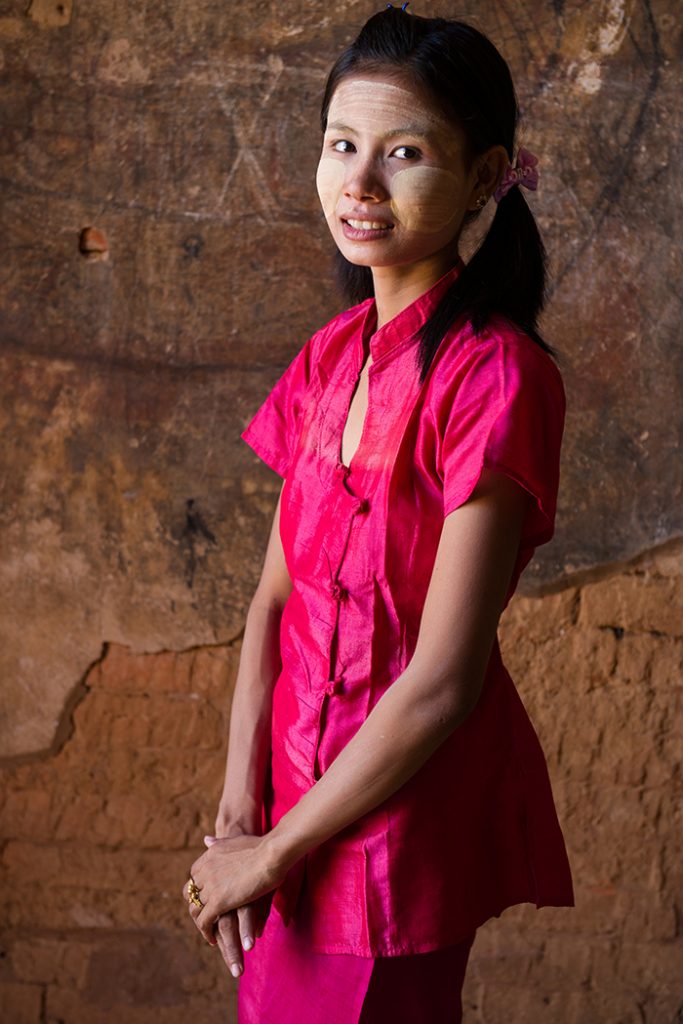
Gold, pearls & gems
For the ultimate pampering, ancient Egyptians revered gold’s curative and antibacterial properties; used topically on the face, 25-carat gold powder results in glowing and rejuvenated skin, helping retain collagen and improve circulation. In ancient Chinese medicinal practices, pearl powder was acclaimed for enhancing skin quality, and it is often used to treat acne and rosacea. For minimizing dark circles under the eyes and brightening the complexion, conch shell powder plays a role in Ayurvedic medicine. Mayan shamans, Chinese healers and many other traditions taught that jade, quartz and other gemstones enable energy flow through the body.
Massage & pressure points
Since time immemorial, people have used massage to relieve sore and tired muscles, improve circulation, reduce nerve compression or simply relax. The earliest records show its popularity in China, Egypt and India. Many others followed – Swedish and deep tissue, as well as more exotic styles like the gentle pressure and stretching of Thai massage and the pinpoint force of shiatsu for opening energy channels. Unique in application, the ancient Chinese introduced cupping to enhance circulation, the Balinese rolled bamboo sticks to loosen fascia, and many other cultures around the world applied a variety of hot stones – from jade to lava rock – for deep relaxation. The Mayans combined aromatic oils and native salts into their stone massages to help release tension.
Salt caves & sea salt
The modern-day therapeutic use of salt caves began at Poland’s Wieliczka Salt Mine in 1843, although the practice can be traced back to Grecian times, and continues to this day. Beyond the calming solitude of a salt cave, exposure to micro-sized salt particles clears airways, reduces inflammation and disinfects sinuses and lungs. Sea salt scrubs paired with wraps and combined with essential oils stimulate circulation, exfoliate and promote lymph flow, leaving the body glowing and massage-ready.
Saunas & sweat lodges
Recognizing the benefits of eliminating toxins by sweating, many cultures around the world established purification rituals that involved heating the body. Similar to Native American sweat lodges, the Aztec temazcal – a steam bath inside a circular brick or mud abode – merged shamanistic rituals with the health and wellness benefits of improved circulation, muscle relaxation and reduced pain. In Finland, similar to sweat lodges, using a sauna has been a way of life for over 2,000 years, originally dug into the ground and lined with leathers and furs. They believed the steam formed by throwing water onto the fire was cleansing and purifying.
Close to home
Three Canadian spas that practice ancient wisdom
Sento Spa
Located along the banks of the St. Lawrence River on the outskirts of Lévis, Quebec, guests can indulge in Japanese-inspired baths and exotic treatments in the ambiance of a beautifully restored Victorian manor. Co-owners Marie Renier and Jean-Philippe Devaux were inspired by the practice of “sento,” or public bathing, during a trip to the island of Shikoku, Japan. Sento stems from the ancient ritual of washing before entering a temple to purify and cleanse one’s body, mind and spirit.
“In our travels we discovered that after a long day of work, the Japanese are in the habit of going to the sento to clean their body,” they explain. “It’s a ritual that comes with spiritual practice. The immersion in a very hot bath after the obligated purification step, is a pure moment of happiness.”
After immigrating to Quebec from Belgium, the duo opened their spa in 2011 to create a haven for relaxation and healing, says Renier – with an assortment of treatments, hot and cold baths, as well as steam and sauna complemented by a salt cave and chromatherapy lounge. The spa’s specialties include Asian massages like Japanese anma, and Chinese tuina. She explains, “Those treatments are completely different from the massages we are used to. Therapists use no oil; it’s based on Chinese traditional medicines and helps the body find a balanced energy.”
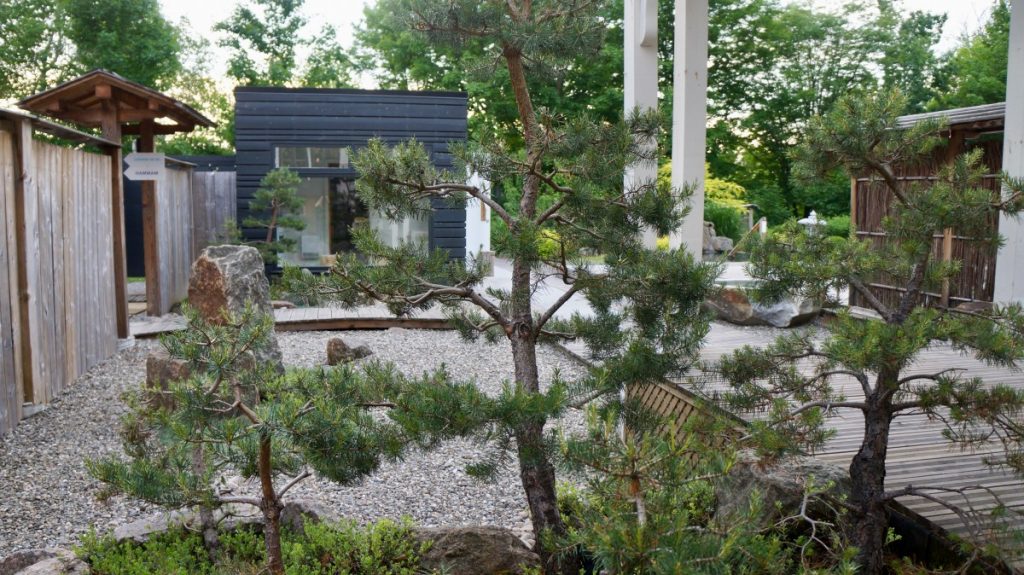
“We also offer kobido, Japanese facial treatment,” Renier says, explaining that the 90-minute treatment includes massaging the body’s meridians or vital energies, acupressure and a series of prescribed techniques that have been passed down over generations to release tension, revive the skin’s natural glow, restore elasticity and promote energy circulation in the upper body.
When she and her husband renovated the heritage house, they worked with a designer knowledgeable in Japanese traditional aesthetics, incorporating natural stone and cedar wood and creating Zen gardens, with pines, stone cascades and outdoor pavilions constructed without nails in the traditional Japanese manner.
“Our cedar wood tubs and our natural stone bath have the perfect design to completely immerse the body,” Renier adds. “Our clients love this place for its intimacy. All the different baths and installations are set in a way that you don’t see other clients.” Today, the spa has 12 employees and 25 therapists.
Ancient Cedars Spa
At the Wickaninnish Inn in Tofino, B.C., this spa overlooks the Pacific Ocean. Here, there’s no need for relaxing music; with the French doors open to the waterfront patio, the gentle ocean waves and breezes do it all. The Inn’s Managing Director, Charles McDiarmid, says, “If the Wickaninnish Inn is the oyster, its pearl has to be Ancient Cedars Spa.”
The Inn is surrounded by 100 acres of ancient rainforest. Many of the trees are cedars, a native tree which the local Indigenous people call the “Tree of Life.” Spa Manager Anyeska O’Rourke explains, “Traditionally, it was used in almost everything they did. Each part of the tree – roots, bark, wood and branches – were used to make items to sustain their lives, such as canoes, big houses, totem poles, baskets, mats, clothing and cedar bark regalia.” It’s used in the spa’s brand to highlight wellness, wisdom and being one with nature.
Among the spa’s treatments is Hishuk Ish Tsawalk, which incorporates the traditional cleansing ceremonies of local West Coast Indigenous people, with elements of fire, water, earth and air. The First Nations phrase means, “Everything is one – all is interconnected.” The spa collaborated with local Indigenous women to incorporate the ceremony. As O’Rourke explains, “So much of our culture involves Indigenous traditions; we had to include this in our wellness offerings. It begins with a full-body exfoliation using a Vancouver Island seaweed body polish to invigorate the soul, followed by hot and cold water therapy to awaken the spirit. Internal reflection is encouraged with the final step, when heated local basalt stones are used in a massage to encourage the body into a state of calm and deep relaxation.”
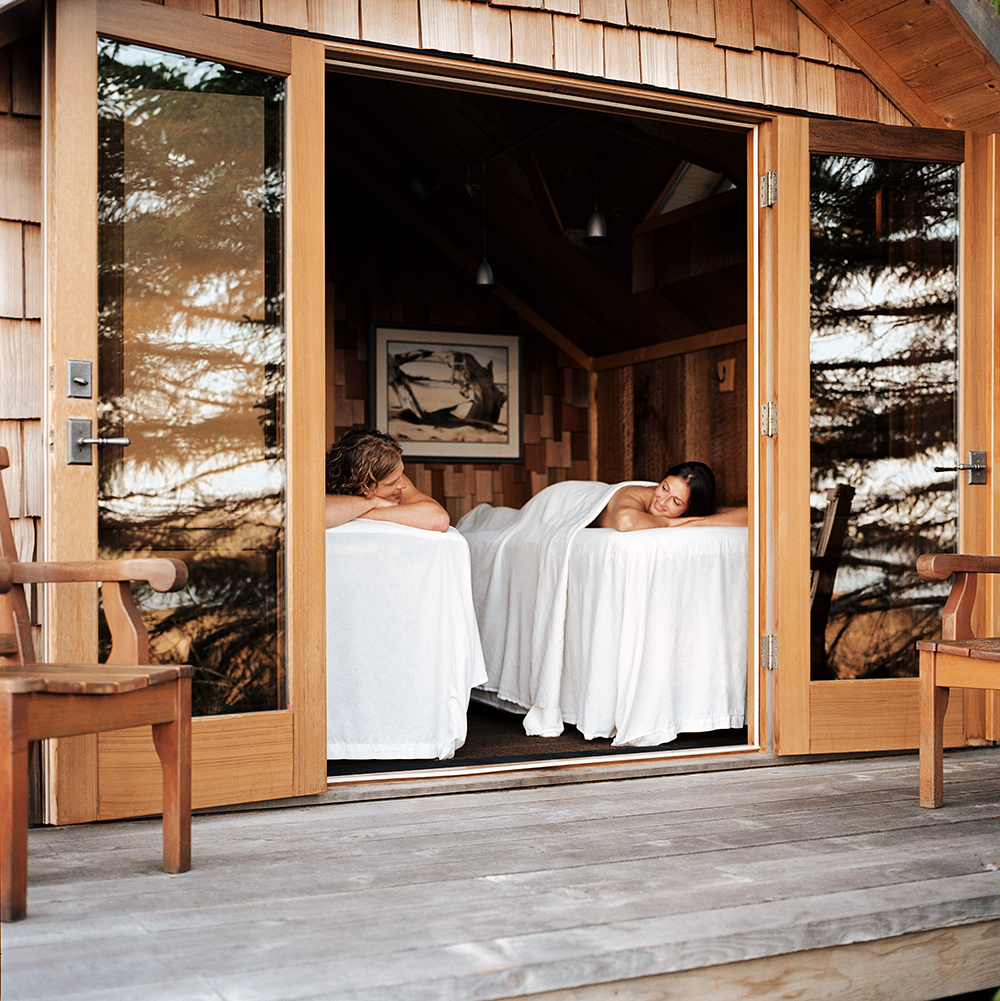
Another treatment, Lomi Lomi, is traditionally used by Hawaiian shamans and healers as an initiation into wholeness of mind, body and spirit. The weaving of passive movement, stretching and rhythmic full-body massage strokes enhances relaxation and allows for the release of tension. “The deeper meaning of Lomi Lomi is ‘to remove that which does not belong,’” O’Rourke says, “thus to awaken the senses to harmony.”
Celebrating its 20th anniversary this year, the spa offers a full range of body therapies, thalassotherapy, signature treatments, skincare, esthetics and yoga. “We also offer wellness packages that have become quite popular,” adds O’Rourke.
www.wickinn.com/spa-and-wellness/ancient-cedars-spa
Vida Spas
Ayurveda is carefully woven into the guest experience for this chain of high-end spas at the Sutton Place Hotel and The Westin Bayshore Hotel in Vancouver, and the Fairmont Chateau Whistler, in B.C. The company president Allison Hegedus explains, “Based on the foundation of this 5,000-year-old Indian philosophy, our mission is to restore each customer’s energy and well-being to help them get the most from life.” The belief is that all individuals are a combination of three earth elements: air, water and fire, known as a dosha type. Hegedus explains, “Many challenges and stress can cause our dosha to fall out of balance. For example, an individual who is Vata (air) when in balance can be very creative, multi-task and a fast thinker/doer. When they fall out of balance, they become forgetful, they don’t sleep and they will lose weight very easily.” The goal of an Ayurvedic massage specific to this dosha will be to slow the Vata personality down. “Every movement is slow, base oils are rich and nourishing, essential oils are calming and grounding, to slow down the mind and body and bring their personality back into balance.” The treatments are accompanied by all-natural, locally made Vida Ayurvedic products so that guests can bring their experience home and continue balancing their doshas. (These products are also available on a wholesale basis.)
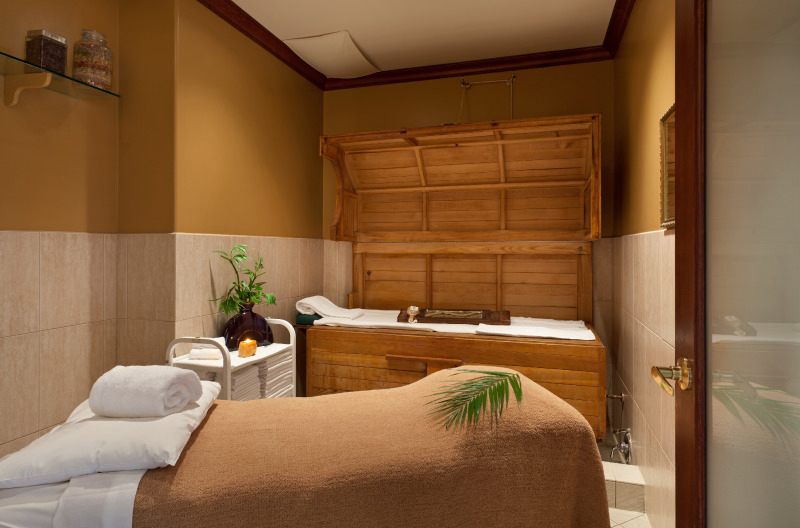
Ayurvedic massage applies generous amounts of warm oil over the body, with extra attention to the head, neck and scalp; guests can also opt for abhyanga, which is when the massage is performed by two therapists. Shirodhara applies a steady stream of warm oil flowing over the crown of the head; as a pre-meditative technique to quiet the mind, all doshas benefit equally. Hegedus explains, “Clients that have headaches, head congestion, difficulty sleeping or insomnia will benefit from this treatment.” Another common Ayurvedic practice, swedana uses herb-enhanced steam to release toxins from the body through the skin. At Vida Spas, guests are cocooned in a custom-built cedar steam cabinet. Afterwards, herbal powder brushing of the entire body stimulates and exfoliates the skin to prevent re-entry of toxins.
The spa’s original founder, Colleen Fraser, was trained by one of the best Ayurvedic teachers in the world, Dr. Vasant Lad at the Ayurvedic Institute in Albuquerque, New Mexico. Fraser continues to work as Vida’s education director, personally undertaking all Ayurvedic training for spa staff.
